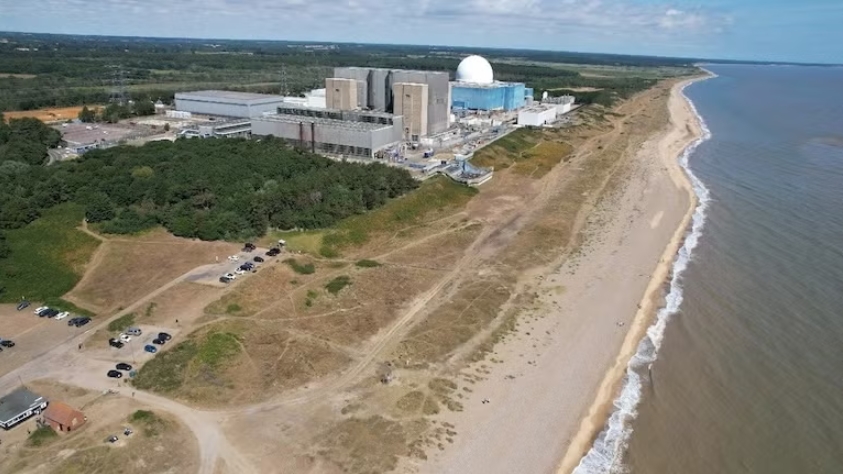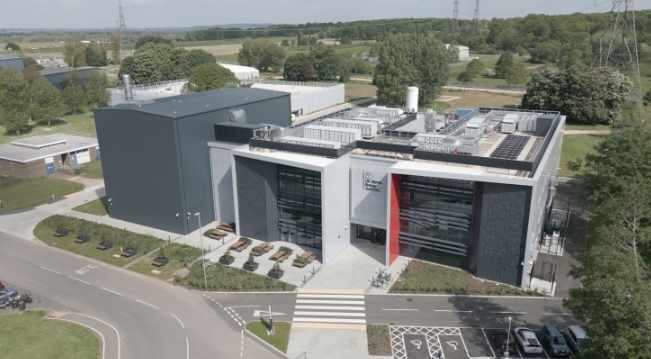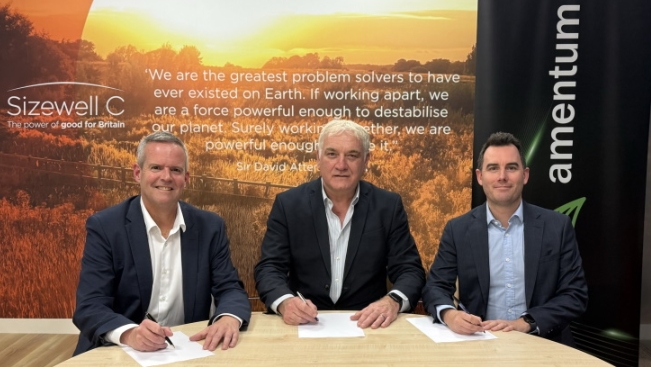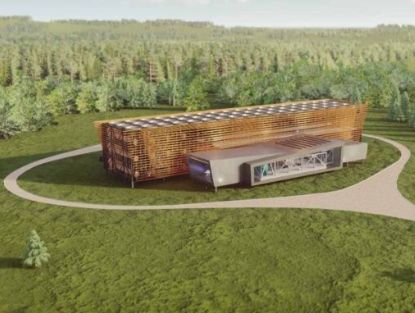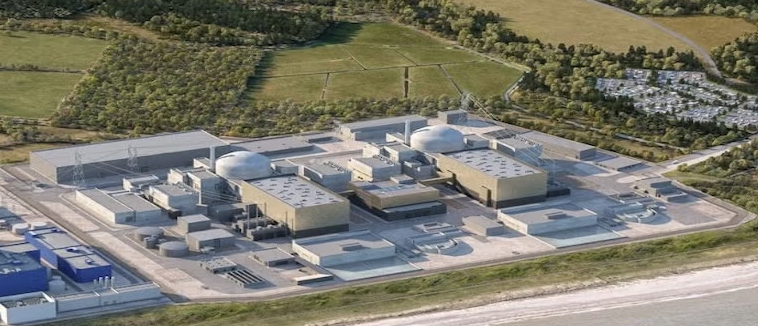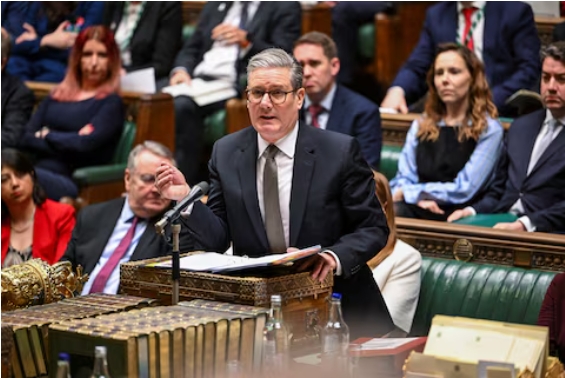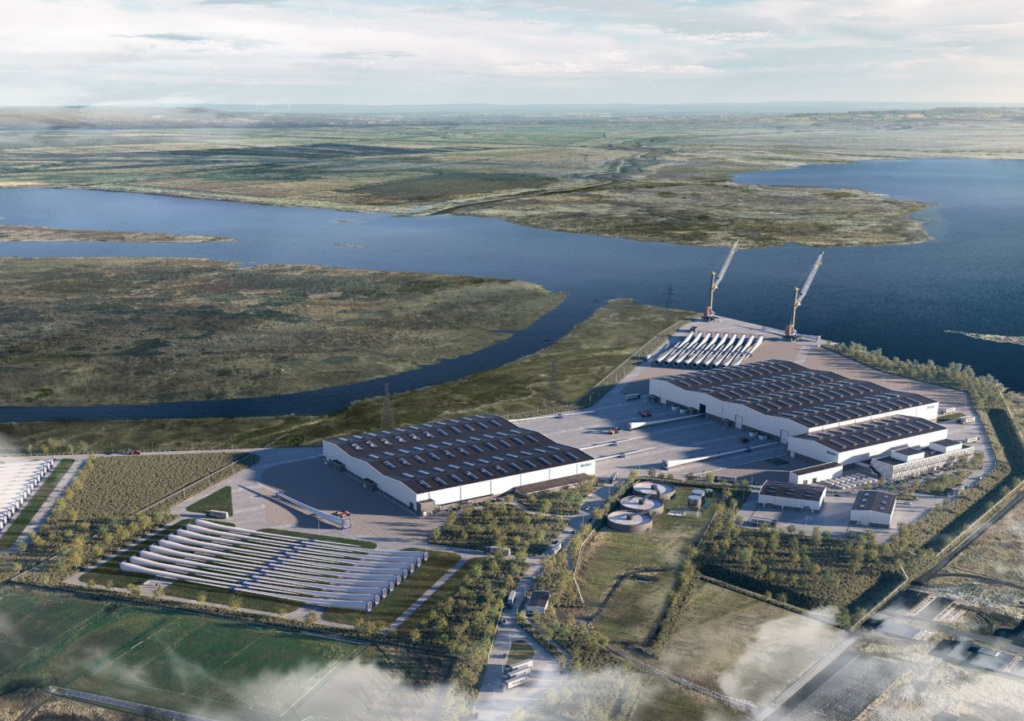
It said the Civil Nuclear Roadmap "outlines plans for the biggest expansion of nuclear power for 70 years to reduce electricity bills, support thousands of jobs and improve UK energy security - including exploring building a major new power station and investing in advanced nuclear fuel production".
Nuclear's share of energy in the UK is currently about 16%, however all but one of its existing reactors are due to retire by 2030.
The roadmap "will give industry certainty of the future direction of the UK's ambitious nuclear programme, on top of the government's historic commitment to Sizewell C and world-leading competition to develop small modular reactor (SMR) technology," the government said.
The plans include next steps for exploring a large-scale nuclear power plant as well as SMRs. The roadmap also includes a government ambition to secure 3–7 GW worth of investment decisions every five years from 2030 to 2044 on new nuclear projects.
According to the government, plans to streamline the development of new nuclear power plants and introduce smarter regulation could speed up the overall process and, as a result, the delivery of nuclear power in the UK. This includes allowing regulators to assess projects while designs are finalised, and better cooperation with overseas regulators assessing the same technology.
Earlier this week, the government announced it will also invest up to GBP300 million (USD381 million) in UK production of high-assay low-enriched uranium (HALEU), which is currently only commercially produced in Russia. HALEU - uranium enriched to between 5% and 20% uranium-235 - will be used in the advanced nuclear fuel required for most of the next-generation reactor designs currently under development.
The government has also published two consultations, one on a new approach to siting future nuclear power plants and another on supporting the sector and encouraging private investment to roll out advanced nuclear projects. The proposals aim to "attract investment in the UK nuclear sector by empowering developers to find suitable sites rather than focusing on eight designated by government".
The roadmap says: "The coming years are expected to bring further clarity on the costs and effectiveness of new nuclear technology. This may require us to re-evaluate some of our strategies and policies for the long term. To take account of these developments, we therefore intend to publish a Roadmap 'update' by the end of 2025."
"Nuclear is the perfect antidote to the energy challenges facing Britain - it's green, cheaper in the long term and will ensure the UK's energy security for the long-term," said Prime Minister Rishi Sunak. "This is the right long-term decision and is the next step in our commitment to nuclear power, which puts us on course to achieve net-zero by 2050 in a measured and sustainable way. This will ensure our future energy security and create the jobs and skills we need to level up the country and grow our economy."
Secretary of State for Energy Security and Net Zero Claire Coutinho added: "We're making the biggest investment in domestic nuclear energy in 70 years ... From large gigawatt projects to small modular reactors, the UK's wider nuclear revival will quadruple our nuclear capacity by 2050 – helping to power Britain from Britain."
"The government's investment in nuclear will ensure the UK remains at the forefront of technological developments," said Minister for Nuclear Andrew Bowie. "Our plans will give investors the confidence to back new UK projects, with a simpler process for locating new schemes and clear support for private sector companies developing innovative new technologies."
Simon Bowen, chairman of Great British Nuclear, the arms-length body designed to drive the delivery of new nuclear energy projects in the UK, welcomed the roadmap and the consultations on siting - especially in the context of the UK's current small modular reactor selection process - and alternative routes to market.
He said: "It's a very comprehensive document, a great step forward and a step in the right direction for forming the UK's new nuclear programme, which we will be accountable for delivering alongside our colleagues in Sizewell and Hinkley."
The release of the roadmap was welcomed by industry, with Tom Greatrex, Chief Executive of Nuclear Industry Association, saying: "We will need both large and small nuclear at scale and at pace for our energy security and net-zero future. Allowing developers to engage with the government about Regulated Asset Base funding models should also make it cheaper to finance projects, cutting costs to the consumer. Decisions on 3-7 GW in each five year period provide the greater clarity and predictability, which in turn enables supply chain investment and more UK content in the future fleet.
"The commitments to maximise our use of regulatory assessments already undertaken overseas will help get innovative reactor designs into construction faster and reduce the duplication in regulatory activity that eats up time for no additional benefit."
World Nuclear Association Director General Sama Bilbao y León added: "The UK government’s roadmap to streamline the process of future nuclear development and quadruple nuclear energy in the UK by 2050 is a pragmatic example of the positive action now being taken to deliver on the commitments made by those countries that endorsed the net zero nuclear Ministerial Declaration to Triple Nuclear Energy at COP28. The UK was a founding government partner of our Net Zero Nuclear initiative and I welcome today’s announcement."
